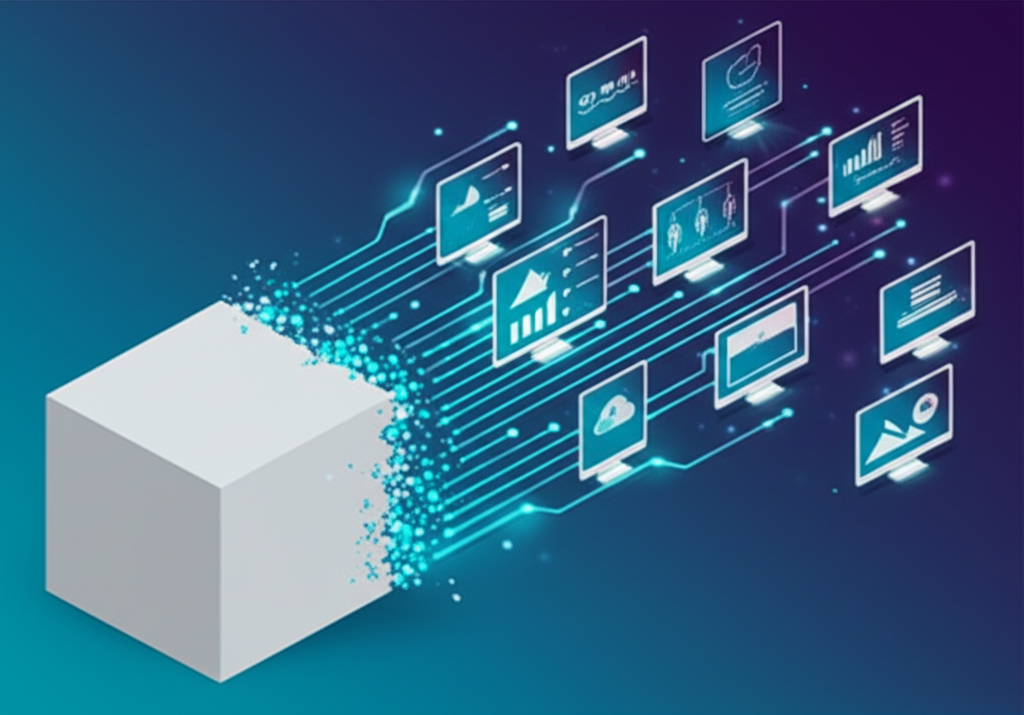Headless CMS: Revolutionizing Enterprise Content Management for Scalability and Agility
Discover how a Headless CMS revolutionizes enterprise content management, offering scalability, agility, and enhanced content delivery.

Sabir Hussain
July 21, 2025 • 3:54 pm
Headless CMS: Revolutionizing Enterprise Content Management for Scalability and Agility
In today's dynamic digital landscape, enterprises face the constant challenge of managing and delivering content across a growing number of channels. Traditional content management systems (CMS) often struggle to keep pace, leading to inefficiencies and limitations. A headless CMS offers a modern solution, transforming content management for enterprises by providing unparalleled scalability, agility, and flexibility. This article explores how a headless CMS revolutionizes enterprise web solutions, enabling businesses to create and deliver content more efficiently than ever before. We'll delve into the benefits of headless content systems, examine the key features of an enterprise CMS, and show you how to leverage scalable CMS solutions for long-term success. Understand the power of modern content management in the digital era with headless website development.
The Limitations of Traditional Enterprise CMS
Traditional, monolithic CMS platforms tightly couple the content repository (the back-end) with the presentation layer (the front-end). While this approach may seem convenient initially, it can create significant limitations as businesses grow and expand their digital presence.
Common challenges of traditional CMS platforms include:
- Limited Flexibility: Difficult to deliver content to new channels and devices.
- Scalability Issues: Performance bottlenecks during peak traffic periods.
- Complex Integrations: Integrating with other systems can be challenging and time-consuming.
- Slower Development Cycles: Changes to the front-end often require extensive back-end modifications.
Headless CMS: A Decoupled Architecture
A headless CMS addresses these limitations by decoupling the content repository from the presentation layer. The back-end focuses solely on content creation, storage, and management, while the front-end is built separately using modern technologies and consumes content via APIs.
Key Benefits of Headless CMS for Enterprises
- Omnichannel Delivery: Seamlessly deliver content to websites, mobile apps, IoT devices, and emerging platforms.
- Scalability and Performance: Optimized front-end performance and scalable infrastructure to handle high traffic volumes.
- Technology Agility: Choose the best front-end technologies for your specific needs without being constrained by the CMS.
- Improved Developer Productivity: Faster development cycles and easier integration with other systems.
- Enhanced Security: Decoupling reduces the attack surface, improving overall security.
Core Components of a Headless CMS Architecture
- Content Repository: Stores and manages content in a structured format.
- API Layer: Provides access to content via RESTful or GraphQL APIs.
- Front-End Framework: Builds the user interface using technologies like React, Vue.js, or Angular.
- Delivery Channels: Websites, mobile apps, IoT devices, and other platforms that consume content.
Real-World Examples of Headless CMS Success
Leading enterprises are already leveraging headless CMS to transform their content management strategies:
- Nike: Delivers personalized content experiences across multiple channels using a headless architecture.
- Netflix: Manages its vast library of content and delivers it to millions of devices using a headless CMS.
- National Geographic: Creates immersive digital experiences with a headless CMS that integrates seamlessly with its other systems.
Choosing the Right Headless CMS for Your Enterprise
Selecting the right headless CMS depends on your specific business needs and technical requirements.
Consider the following factors:
- Content Modeling Capabilities: Does the CMS support the types of content you need to manage?
- API Flexibility: Does the CMS offer a flexible and well-documented API?
- Scalability: Can the CMS handle your expected content volumes and traffic levels?
- Security: Does the CMS offer robust security features?
If you need help selecting the perfect CMS or managing a headless website development project, look to our Agency Partnerships for Headless Web Development.
Also, we can help you with sanity website development.
Considering Nextjs Websites or need help with Website Development? We can help.
Conclusion: Embracing the Future of Enterprise Content Management
Headless CMS is revolutionizing the way enterprises manage and deliver content, providing unparalleled scalability, agility, and flexibility. By decoupling the content repository from the presentation layer, enterprises can unlock new levels of efficiency and innovation. Embrace the future of modern content management with a headless CMS and transform your digital experiences.